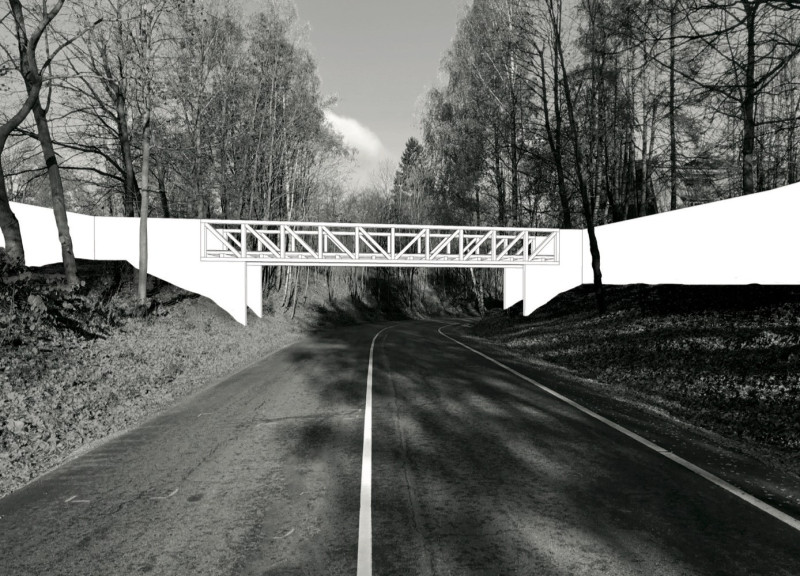5 key facts about this project
Design Intent and Representation
The architectural design of the Fortified Footbridge is inspired by the local folklore of the "Rose of Turaida." This narrative serves as a thematic foundation for the project, intertwining the stories of its historical context with the structural elements. The bridge facilitates pedestrian movement while reinforcing a cultural connection between the two castles. It acts as a subtle reminder of the region's rich past, providing an immersive environment for visitors.
The design emphasizes functionality while respecting the natural landscape. Elevated above roadway traffic, the bridge incorporates a series of zones for pedestrian activities, allowing users to engage fully with their surroundings. The spatial organization includes areas for rest and contemplation, accommodating the needs of visitors while enhancing their experience.
Structural and Material Consideration
The architecture employs a U-frame wooden truss structure, supported by concrete foundations. The choice of materials reflects a thoughtful approach to sustainability and durability. Wood is utilized for its aesthetic appeal and lightweight properties, while concrete serves to provide a robust base capable of withstanding environmental stressors. This combination of materials not only ensures structural integrity but also allows for an engaging visual contrast.
This project integrates natural stone into the design, harmonizing with the geology of the region and reinforcing a connection to the site. The use of transparent materials where appropriate fosters visual connectivity between users and the landscape, further encouraging interaction with the environment.
Unique Design Approaches and Features
The Fortified Footbridge distinguishes itself from typical bridge designs through its strong narrative integration. The architectural language conveys storytelling elements that resonate with the cultural heritage of Latvia. The bridge intentionally elevates user experience by providing viewpoints that enhance the appreciation of the surrounding natural beauty.
In addition, the careful consideration of the landscape influences how users interact with both the bridge and the historical sites. Defined gathering areas at each end not only facilitate movement but also encourage social interaction among visitors. The design encourages exploration, inviting individuals to pause and reflect on the historical significance of their surroundings.
For those interested in a deeper understanding of this project, we invite you to explore the architectural plans, sections, and overall designs of the Fortified Footbridge. By reviewing these elements, you can gain insights into the architectural ideas that underpin this significant connection between history and contemporary design.


























